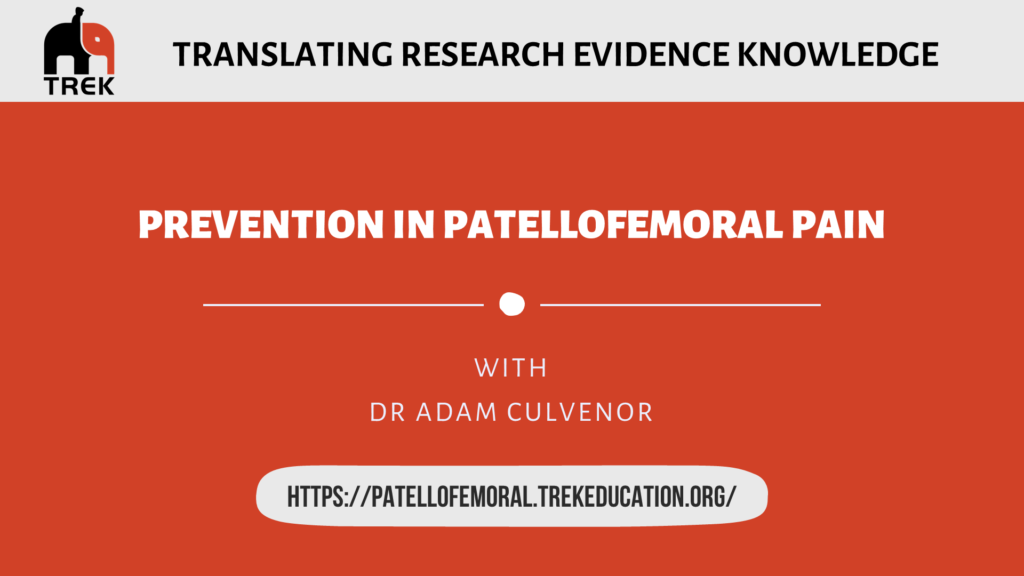The long-term prognosis for people with patellofemoral pain is often poor for a considerable number of people affected by the condition. Evidence suggests that one in two people reported unfavorable outcomes in 5-8 years after treatment.1
Also, patellofemoral pain is associated with reduced physical activity, sports practice interruption, lower quality of life, and may lead to patellofemoral osteoarthritis.2,3,4,5 Therefore, effective strategies to reduce the prevalence and associated burden of patellofemoral pain are essential.
In this section, you will find detailed information on strategies for preventing patellofemoral pain. Let’s find out more?
Recently, a systematic review investigated this topic.6 Most of the included studies about patellofemoral pain prevention were limited to military recruits and young athletes. Findings indicate that some strategies can be effective to prevent patellofemoral pain in these populations:6
- In young athletes and military recruits, there is evidence that patellofemoral braces worn during physical activity may reduce the risk of patellofemoral pain by 60%.
- In novice runners, evidence suggests a running retraining programme to run softer (ie, attenuate landing stiffness) may reduce the risk of
- patellofemoral pain by 79%.
- Although it was not statistically significant, multicomponent exercise-based injury prevention programmes may reduce the risk of patellofemoral pain by 51%.
- Although it was not statistically significant, foot orthoses may reduce the risk of patellofemoral pain by 37%.
These results suggest that strategies such as using knee braces during physical activity and running retraining to attenuate landing stiffness can be used to reduce the risk of patellofemoral pain in young adults with increased activity level physical and military recruits.
Further studies are needed to confirm which prevention strategies are effective for other populations often affected by patellofemoral pain, such as adolescents.
References
- Lankhorst et al. 2015. Factors that predict a poor outcome 5–8 years after the diagnosis of patellofemoral pain: a multicentre observational analysis.
- Glaviano et al. 2017. Physical activity levels in individuals with and without patellofemoral pain
- Rathleff et al. 2016. Is knee pain during adolescence a self-limiting condition? Prognosis of patellofemoral pain and other types of knee pain.
- Coburn et al. 2018. Quality of life in individuals with patellofemoral pain: A systematic review including meta-analysis.
- Crossley. 2014. Is patellofemoral osteoarthritis a common sequela of patellofemoral pain?
- Culvenor et al. 2020. Is patellofemoral pain preventable? A systematic review and meta-analysis of randomised controlled trials.


